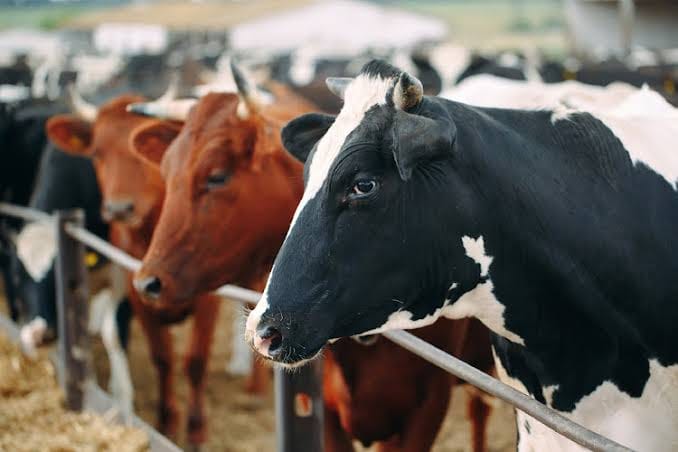
Foot-and-mouth sees culls, CEE border closures
An outbreak of foot-and-mouth disease (FMD) has prompted mass animal culls and tightened border controls across Central and Eastern Europe (CEE). The breakout represents the first significant detection of FMD in Hungary and Slovakia in over five decades.
Since Hungary confirmed its first case at a dairy farm in Gyor-Moson-Sopron county, near the Slovak border, on 7 March, subsequent cases have emerged in the Nitra and Trnava regions of west Slovakia. Both countries have now implemented extensive containment measures, culling thousands of animals and establishing emergency veterinary protocols.
Hungary's containment efforts under scrutiny
FMD affects cloven-hoofed animals such as cattle, pigs, sheep and goats. It is highly contagious, spreading through direct contact, contaminated surfaces, and, under certain conditions, airborne particles. While it poses minimal risk to humans, the economic impact can be severe due to export restrictions, enforced culling and trade disruptions.
Professor Jiri Cerny of the Czech University of Natural Sciences in Prague, Czechia, said the most significant risk of infection is "through contaminated human objects" such as "tyres and cars, shoe soles, and through contaminated food."
In response, Hungarian authorities have introduced disinfection mats at road entry points, deployed mobile veterinary teams and established restricted zones in affected areas. However, the implementation of these measures has been questioned, amid reports of dried-out mats and inadequate enforcement at key junctions. Financial support for affected farmers has been pledged, including loan moratoriums.
Hungarian authorities had conducted checks at almost 1,000 farms nationwide by Thursday, 10 April, with only 4 in the affected northwest of the country returning positive results. Hungary's cattle constitute 1.2% of the EU's total stocks. Slovakia has also closed sixteen road and rail crossings with Hungary and one with Austria, citing concerns over Hungary's containment performance.
A senior member of Hungarian Prime Minister Viktor Orban's government suggested the virus may have been deliberately introduced. "At this stage, we can say that it cannot be ruled out that the virus was not of natural origin, we may be dealing with an artificially engineered virus," Orban's chief of staff Gergely Gulyas told members of the press.
Gulyas added that it cannot be ruled out that the virus outbreak was due to a "biological attack", without giving information on the possible culprit, based on information from a foreign laboratory. According to unconfirmed reports, the European Commission (EC) may have identified the virus strain as FMD serotype O, genetically closest to a variant previously recorded in Pakistan in 2018.
Slovakia escalates response, closes borders
Slovak authorities established surveillance zones, restricted the movement of livestock and formally notified the EU of its confirmed cases, on 21 March. The EC confirmed that the EU Veterinary Emergency Team has been deployed to Slovakia to provide support. Slovakia is collaborating with the EC on diagnostic and monitoring support, with national laboratories working under EU protocols.
Romania, which recently joined the Schengen Area, reintroduced veterinary controls at its border with Hungary. The Romanian National Centre for Disease Control has established checkpoints on key routes from Hungary, implemented vehicle disinfection, and mandated disease testing for all incoming animals. Imports of live animals, feed, straw, compost, and manure from Hungary have been banned, alongside meat and dairy products from cloven-hoofed animals originating in affected regions.
Austria, which has not reported any infections, closed 23 border crossings with Hungary and Slovakia and implemented vehicle disinfection procedures at key freight points. Austrian authorities cited veterinary risk models and the potential for airborne spread in high-density livestock zones as justification for the pre-emptive measures. The Austrian Farmers' Federation supported the move, but opposition figures criticised what they called a lack of regional coordination.
EU outlines emergency coordination, surveillance
On 11 March, the EC adopted interim emergency measures, delineated restricted zones and set the duration of local controls in Hungary and Slovakia. These measures were unanimously endorsed by EU member states at the Standing Committee on Plants, Animals, Food and Feed on 12 March.
An EC spokesperson stated that member states must maintain contingency plans and that national reference laboratories must collaborate with the EU reference laboratory. The spokesperson added: "To this end, the Union maintains one of the world's biggest antigen banks for express formulation of vaccines." The EC continues to monitor the situation and has not ruled out additional support measures should the outbreak escalate or spread beyond currently affected areas.
The outbreak has intensified pressure on veterinary coordination across CEE, particularly following recent African swine fever episodes. Hungary's containment efforts and the uneven regional response have raised concerns about long-term cooperation and border management during animal health emergencies.
Czech Agriculture Minister Marek Vyborny said restrictions could be lifted 30 days after the last farm animal infected with foot-and-mouth disease is slaughtered in Slovakia. No new cases were detected last week in Hungary, where the cleaning of affected farms is nearing completion.
